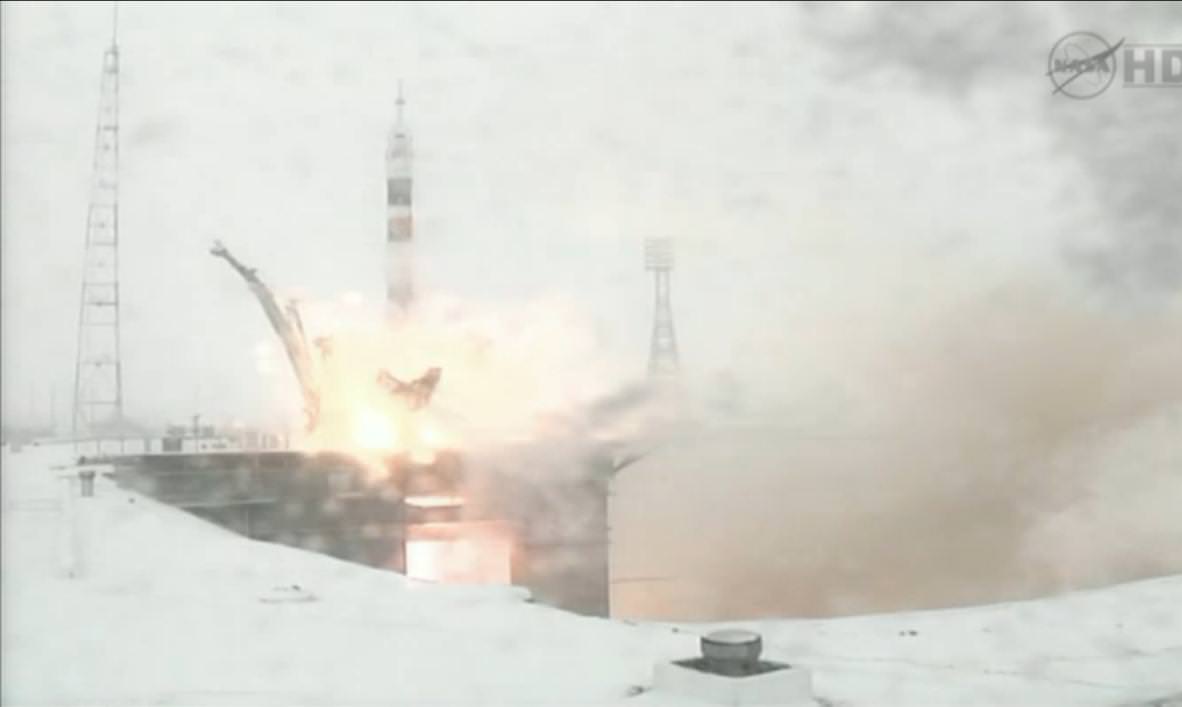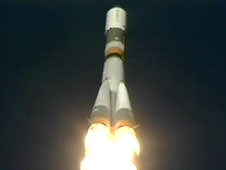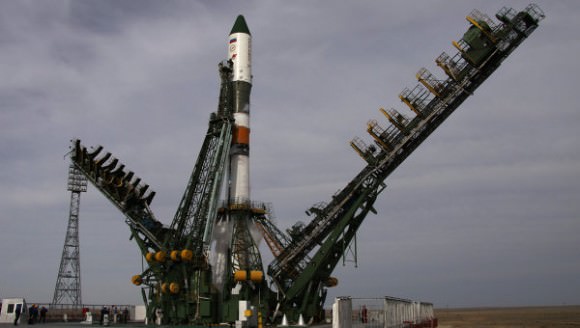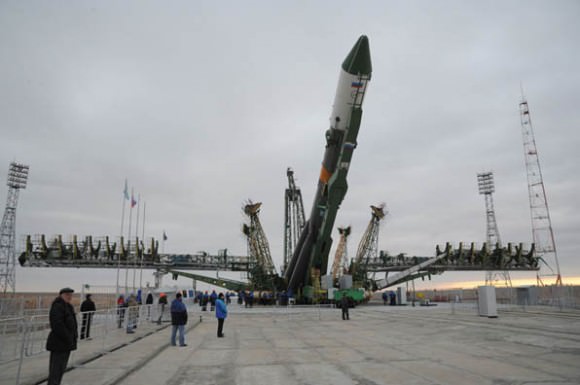[/caption]
The future survival and fate of the International Space Station was on the line and is now firmly back on track following today’s (Nov. 13) successful, high stakes liftoff of a Russian Soyuz rocket carrying a three man crew of two Russians and one American bound for the orbiting research platform, amidst the backdrop of a spectacular snowstorm swirling about the Baikonur Cosmodrome in Kazakhstan – rare even by Russian standards.
The international crew comprises Expedition 29 Flight Engineer Dan Burbank from NASA – veteran of two prior shuttle missions to the station in 2000 and 2006 – and Anton Shkaplerov and Anatoly Ivanishin from Russia. It’s the rookie flight for both Russian cosmonauts.
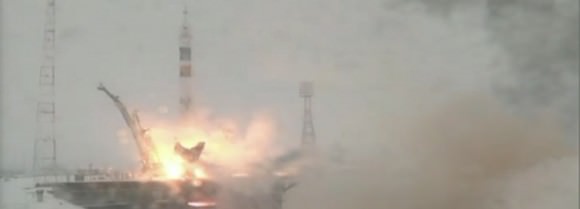
This is the first flight of a manned Soyuz-FG rocket – and of humans to space – since NASA’s Space Shuttle was forcibly retired in July and the subsequent failure of a virtually identical unmanned Soyuz-U booster in August which grounded all Russian flights to the ISS and threatened to potentially leave the station with no human presence aboard.
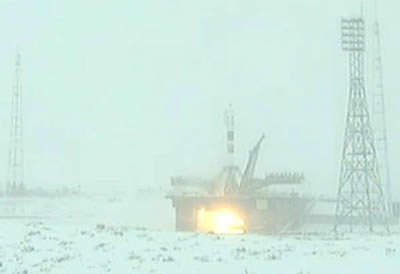
The trio of space flyers soared to the heavens at 11:14:03 p.m. EST Sunday Nov. 13 (11:14:03 a.m. Baikonur time Monday, Nov. 14) abroad their Soyuz TMA-22 capsule which was mounted atop the 50 meter tall Soyuz rocket.
Blastoff occurred precisely on time at about the time when the frigid, snow bedecked launch pad rotated into the plane of the orbit of the ISS. The launch was carried live on NASA TV and the ship quickly disappeared from view behind the nearly blinging blizzard.
The Soyuz TMA-22 achieved orbital insertion some nine minutes later into an initial 143 by 118 mile orbit, inclined 51 degrees to the equator.
The vehicles antennae’s and solar arrays were quickly deployed per plan and all spacecraft systems were functioning perfectly according to Russian Ground Control in Moscow.

Following a two day orbital chase and three course correction burns the future ISS residents are due to dock at the Russian Poisk module at the complex at about 12:33 a.m. EST on Wednesday, Nov. 16.
In the hours prior to launch the crew received a religious blessing from the Russian Orthodox Church, took the bus for the 25 mile trip to the Cosmodrome, donned their white Sokol launch and entry suits and headed to the pad.
The crew boarded the capsule in the midst of an extremely heavy snow storm which struck the Baikonur region of Kazakhstan in the evening prior to launch. See photo from backup NASA astronaut Joe Acaba.
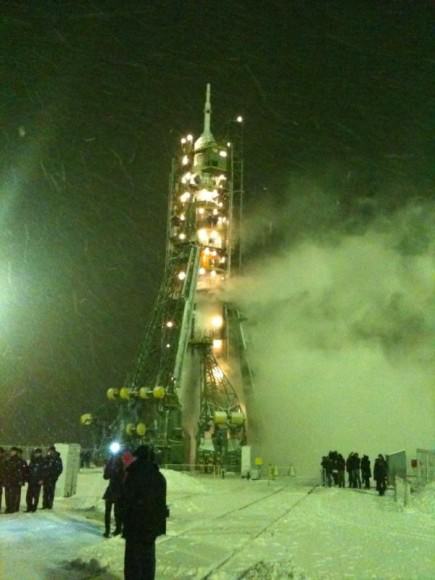
Although snow is quite common at this time of year, the blizzard conditions at launch time were actually quite rare according to NASA spokesman Rob Navias at Baikonur.
American rockets would never blast off in such severe weather conditions – but it’s nothing for the Russians!
The temperature was about 24 F, roughly 6 inches (15 cm) of snow had accumulated on the ground at launch time and moderate wind gusts partially obscured the view.
For the first time ever, a Soyuz crew was dressed in parkas – See Joe Acaba twitpic below !
Gantry towers were retracted from the three stage Soyuz booster at about T minus 25 minutes. The umbilical’s retracted in the final seconds.
The three stage Soyuz-FG rocket lifted off from Launch Pad 1 (LC-1), the same pad from which Cosmonaut Yuri Gagarin flew as the first human to space 50 Years ago this year. The pad is named “Gagarin Start” in honor of Gagarin’s courageous achievement on April 12, 1961.
The rocket was fueled with kerosene (RP-1) and cryogenic liquid oxygen.
The ISS was flying some 248 miles above the Pacific Ocean and just west of Chile at launch time.
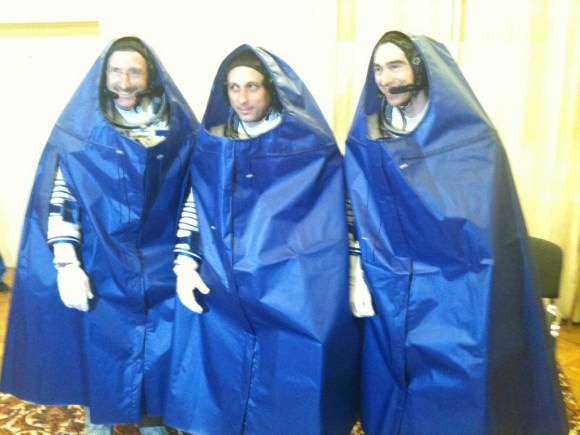
The importance of the TMA-22 mission cannot be overstated because it restored confidence in Russian rockets which now serve as the world’s only pathway for providing human access to the $100 Billion earth orbiting outpost.
The cramped Soyuz capsule measures just 2.2 m wide by 2.1 m high and weighs 2200 kg.
Today’s critical launch had been delayed be nearly two months from September 22, following the failure of a nearly identical Soyuz-U booster in August which was carrying the Progress 44 cargo resupply spacecraft and crashed ignominiously in Siberia after the third stage shut down unexpectedly.
The Progress 44 was loaded with nearly 3 tons of supplies and was bound for the ISS.
The third stage is nearly identical for both the manned and unmanned versions of the normally highly reliable Soyuz booster rocket.
The launch came only after a thorough review of the causes of the accident by a special State Commision- which was traced to a clogged fuel line – introduction of new quality control measures and careful inspection of all the engines.
“We have no doubt in our minds both the rocket and the vehicle are ready, all the activities have been done at the appropriate level of quality and reliability,” said Vladimir Popovkin, Head of Roscosmos, the Russian Federal Space Agency, prior to liftoff.
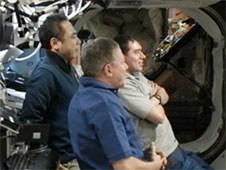
The new crew will join the other half of Expedition 29 already in residence aboard the ISS; Expedition 29 Commander Mike Fossum (NASA) and Flight Engineers Satoshi Furukawa (Japan) and Sergei Volkov (Russia). This will temporarily restore the ISS to a full complement of 6 crewmembers – but only for a few days.
Fossum will hand over command of the station to the new crew within four days. His crew departs the ISS for Earth reentry on Nov. 21.
The successful launch means that the ISS will not have to be left unmanned for the first time since continuous manned occupation began over 11 years ago and which would have placed the station at risk in case of failures requiring human intervention.
Burbank, Shkaplerov and Ivanishin will spend 5 months aboard the station. They will be joined in December by the next trio to round out Expedition 30
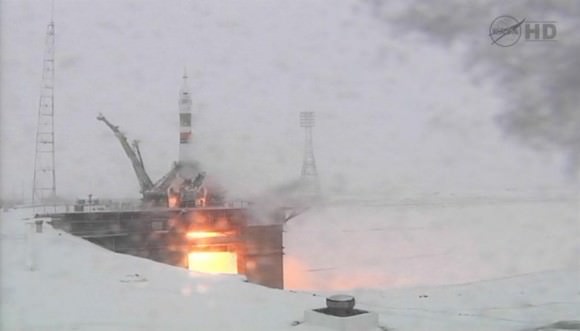
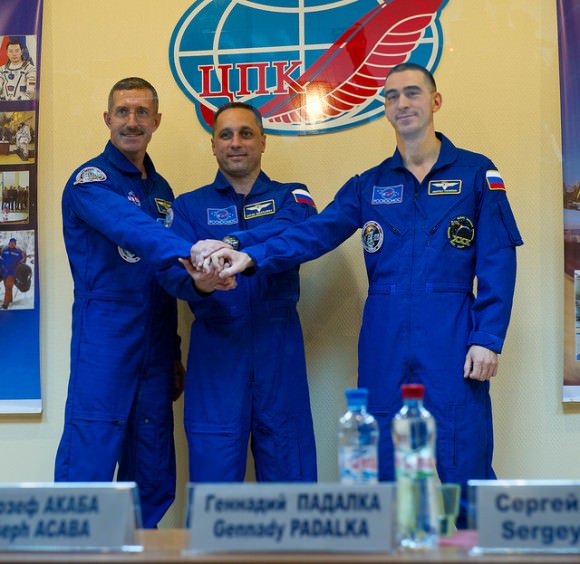
Read Ken’s continuing features about Russian Space Programs including Soyuz, Progress, Phobos-Grunt and Soyuz in South America starting here:
Soyuz Poised for High Stakes November 13 Blastoff – Space Stations Fate Hinges on Success
Success ! Launch Video of Crucial Russian Rocket to ISS puts Human Flights back on Track
Russians Race against Time to Save Ambitious Phobos-Grunt Mars Probe from Earthly Demise
Russia’s Bold Sample Return Mission to Mars and Phobos Blasts Off
Video Duet – Soyuz Debut Blast off from the Amazon Jungle and Rockin’ Russian Rollout !
Historic 1st Launch of Legendary Soyuz from South America
Russian Soyuz Poised for 1st Blastoff from Europe’s New South American Spaceport

